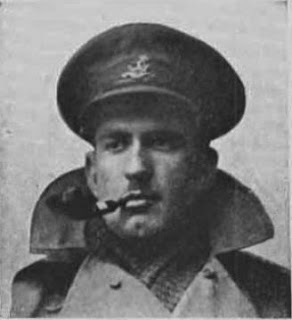In the evening the Battalion was relieved by 8th Yorks & Lancs, with the last men clear of the trenches by 9.40pm ,and proceeded to Winnipeg Camp, arriving at 1am.
The mixed results of the continuing cold weather were noted
in the War Diary of the Divisional Trench Mortar Batttery: “ground became very
hard, and many places, hitherto impassable owing to mud, were easily visited;
digging was very difficult owing to frost making ground like iron for a depth
of two feet”.
Pte. William
Holdsworth died of wounds at no.10 Casualty Clearing Station and was buried
at Lijssenthoek Military Cemetery. From Bradford, he was 29 years old and had
married Elizabeth Ann Brannan in 1906 and the couple had four young children.
William had been working as a woolcomber (for Messrs. Pickles and Wray) but had
enlisted soon after the outbreak of war and had served with 8DWR, being wounded
in June 1915; on recovering he had been posted to 10DWR.
After spending a month at No.3 Canadian General Hospital at
Boulogne being treated for influenza, Pte. Elijah
Sudworth (see 8th January),
was evacuated to England for a period of convalescence.
Capt. Alfred Percy
Harrison (see 9th October
1916), who had been England since being wounded in action at Munster Alley,
returned to France en route to re-joining the Battalion.
Lt. Robert Stewart Skinner Ingram (see 29th December 1916), who had been one of the original officers of Tunstill’s Company, but was now a Flying Officer (Observer) with the RFC, was posted to no.28 Squadron based at Gosport.
Lt. Robert Stewart Skinner Ingram (see 29th December 1916), who had been one of the original officers of Tunstill’s Company, but was now a Flying Officer (Observer) with the RFC, was posted to no.28 Squadron based at Gosport.
A payment of £14 0s. 3d. was authorised, in respect of pay
and allowances due to the late Pte. Myer
Freedman MM (see 19th
September), who had been killed in action on 19th September 1916;
the payment would go to his father, Marks.
A payment of £17 1s. 10d. was authorised, in respect of pay and allowances due to the late Pte. Archie Munro (see 12th October), who had been killed in action in October 1916 while serving with 2DWR; the payment would go to his father, Daniel.
A payment of £17 1s. 10d. was authorised, in respect of pay and allowances due to the late Pte. Archie Munro (see 12th October), who had been killed in action in October 1916 while serving with 2DWR; the payment would go to his father, Daniel.

























